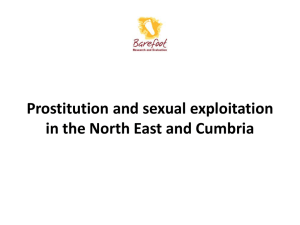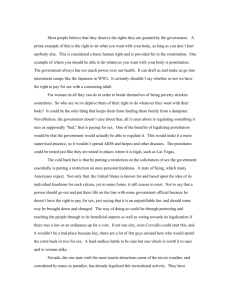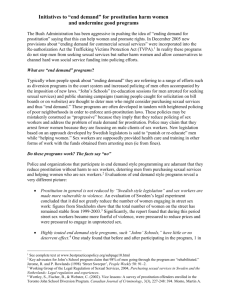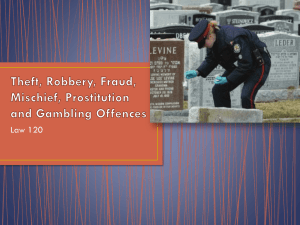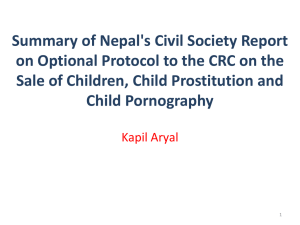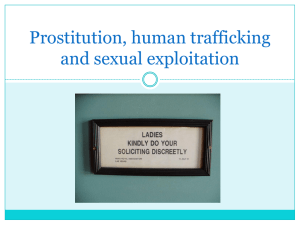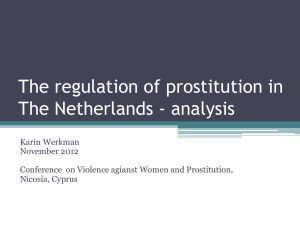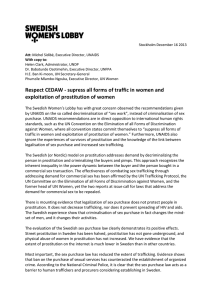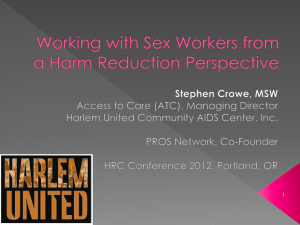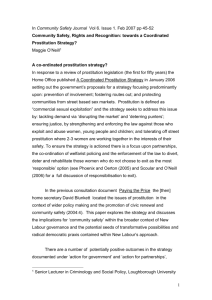3 Sociological Perspectives Applied
advertisement
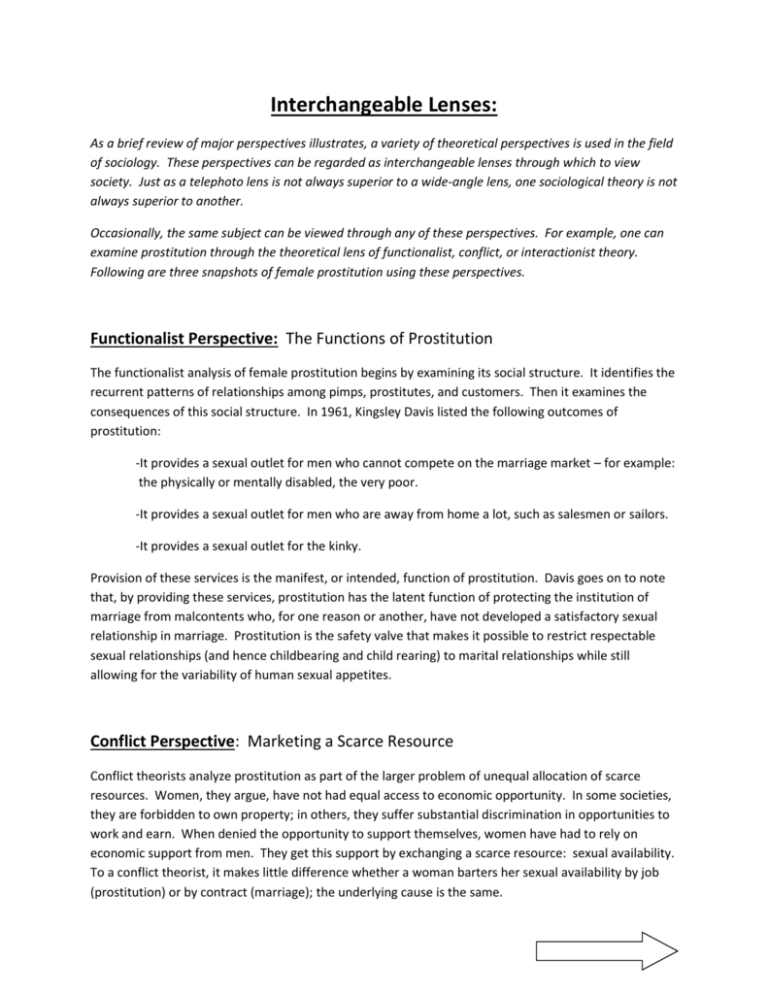
Interchangeable Lenses: As a brief review of major perspectives illustrates, a variety of theoretical perspectives is used in the field of sociology. These perspectives can be regarded as interchangeable lenses through which to view society. Just as a telephoto lens is not always superior to a wide-angle lens, one sociological theory is not always superior to another. Occasionally, the same subject can be viewed through any of these perspectives. For example, one can examine prostitution through the theoretical lens of functionalist, conflict, or interactionist theory. Following are three snapshots of female prostitution using these perspectives. Functionalist Perspective: The Functions of Prostitution The functionalist analysis of female prostitution begins by examining its social structure. It identifies the recurrent patterns of relationships among pimps, prostitutes, and customers. Then it examines the consequences of this social structure. In 1961, Kingsley Davis listed the following outcomes of prostitution: -It provides a sexual outlet for men who cannot compete on the marriage market – for example: the physically or mentally disabled, the very poor. -It provides a sexual outlet for men who are away from home a lot, such as salesmen or sailors. -It provides a sexual outlet for the kinky. Provision of these services is the manifest, or intended, function of prostitution. Davis goes on to note that, by providing these services, prostitution has the latent function of protecting the institution of marriage from malcontents who, for one reason or another, have not developed a satisfactory sexual relationship in marriage. Prostitution is the safety valve that makes it possible to restrict respectable sexual relationships (and hence childbearing and child rearing) to marital relationships while still allowing for the variability of human sexual appetites. Conflict Perspective: Marketing a Scarce Resource Conflict theorists analyze prostitution as part of the larger problem of unequal allocation of scarce resources. Women, they argue, have not had equal access to economic opportunity. In some societies, they are forbidden to own property; in others, they suffer substantial discrimination in opportunities to work and earn. When denied the opportunity to support themselves, women have had to rely on economic support from men. They get this support by exchanging a scarce resource: sexual availability. To a conflict theorist, it makes little difference whether a woman barters her sexual availability by job (prostitution) or by contract (marriage); the underlying cause is the same. Although most analyses of prostitution focus on adult women, the conflict perspective helps explain the growing problem of prostitution among runaway and homeless boys and girls. The young people have few realistic opportunities to support themselves by regular jobs. Many are not old enough to work legally; and in any case, a minimum wage would be inadequate to enable them to support themselves. Their young bodies are their most marketable resource. Interaction Perspective: Learning the Trade Interactionists who examine prostitution take an entirely different perspective. They want to know how prostitutes learn the trade and how they manage their self-concept so that they continue to think positively of themselves in spite of engaging in a socially disapproved profession. One such study was done by Barbara Heyl, who intensively interviewed a middle-aged woman who had spent her career first as a prostitute and then as a madam and trainer of prostitutes. Heyl found that much of the training in the prostitute’s role consists of training in business, not sex. Prostitutes learn how to hustle – how to get the maximum amount of money for the minimum amount of work. In speaking of what her training produces, the madam says she is turning out professional hustlers, not whores. She is proud of her work. She says, “They find that I am teaching them how to make money, to dress tastefully, to converse and be poised with men, to be knowledgeable about good hygiene, to have good working habits, such as punctuality, which will help them whether they stay in the rackets or not, and to have self-respect.” (Heyl 1979, 105.) As these 3 examples illustrate, many topics can be fruitfully be studied with any of the three theoretical perspectives. Just as a photographer with only one lens can shoot almost any subject, the sociologist with only one perspective will not be unduly limited in what to examine. One generally gets better pictures, however, by selecting the theoretical perspective that is best suited to the particular subject. In general, functionalist and conflict theory are well suited to the study of social structures, macrosociology. Interactionist theory is well suited to the study of the relationship between individual meanings and social structures, or microsociology, which focuses on interactions among individuals. Interchangeable Lenses Reading Questions: 1. According to Davis, prostitution serves 3 manifest (intended) functions. What are they? 2. How does prostitution also protect the institution of marriage according to Davis? This is the latent (unintended) function of prostitution. 3. How do conflict theorists explain the cause of prostitution among women? 4. According to the conflict theory, why do young runaways often turn to prostitution? 5. Interactionists examined what topics when they studied prostitution? 6. What did Barbara Heyl’s study find about prostitutes and their views on their job, self-esteem, etc.



